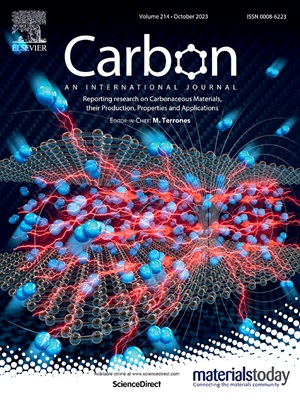Study on the evolution mechanism and concentration regulation of dynamic gradient tribofilm in ionic liquid/nanodiamond synergistic lubrication of titanium alloys
IF 11.6
2区 材料科学
Q1 CHEMISTRY, PHYSICAL
引用次数: 0
Abstract
This study systematically investigates the synergistic lubrication mechanism of ionic liquid and nanodiamond in aqueous solution for titanium alloys, focusing on the effect of ionic liquid concentration. The nanolubricant with 0.1 % ionic liquid and 1.0 % nanodiamond has a friction coefficient reduced to below 0.1. In comparison to pure water lubrication, the mean friction coefficient is reduced by 67.96 %, and the wear volume is decreased by 95.31 %. Its excellent lubricating properties stem from the preferential adsorption of low-concentration ionic liquid onto the friction pair surface to form a thin titanium oxide tribochemical film, while nanodiamond generates a carbon-rich lubricating film through the rolling bearing effect and the transformation of sp3 to sp2 carbon structures. The synergistic effect of both drives the dynamic gradient evolution of the tribofilm from “tribochemical film-dominated” to “carbon-based lubricating film-dominated,” achieving long-lasting lubrication. Molecular dynamics simulations further clarify that low-concentration ionic liquid promotes the rolling friction of nanodiamond by improving its dispersion, while high-concentration ionic liquid inhibits the effective interaction between nanodiamond and the substrate due to excessive adsorption. This study highlights the role of concentration regulation in interfacial adsorption and synergy in multi-component lubrication systems, offering theoretical support for high-performance nanolubricants.

离子液体/纳米金刚石协同润滑钛合金动态梯度摩擦膜演化机理及浓度调控研究
本研究系统研究了离子液体和纳米金刚石在水溶液中对钛合金的协同润滑机理,重点研究了离子液体浓度的影响。含有0.1%离子液体和1.0%纳米金刚石的纳米润滑剂摩擦系数降至0.1以下。与纯水润滑相比,平均摩擦系数降低了67.96%,磨损体积减小了95.31%。其优异的润滑性能源于低浓度离子液体在摩擦副表面的优先吸附形成薄薄的氧化钛摩擦化学膜,而纳米金刚石则通过滚动轴承效应和sp3向sp2碳结构的转变产生富碳润滑膜。两者的协同作用驱动摩擦膜从“摩擦化学膜为主”到“碳基润滑膜为主”的动态梯度演化,实现了持久的润滑。分子动力学模拟进一步阐明了低浓度离子液体通过改善纳米金刚石的分散来促进纳米金刚石的滚动摩擦,而高浓度离子液体由于过度吸附而抑制了纳米金刚石与基体的有效相互作用。本研究强调了浓度调节在多组分润滑系统界面吸附和协同作用中的作用,为高性能纳米润滑剂的研制提供了理论支持。
本文章由计算机程序翻译,如有差异,请以英文原文为准。
求助全文
约1分钟内获得全文
求助全文
来源期刊

Carbon
工程技术-材料科学:综合
CiteScore
20.80
自引率
7.30%
发文量
0
审稿时长
23 days
期刊介绍:
The journal Carbon is an international multidisciplinary forum for communicating scientific advances in the field of carbon materials. It reports new findings related to the formation, structure, properties, behaviors, and technological applications of carbons. Carbons are a broad class of ordered or disordered solid phases composed primarily of elemental carbon, including but not limited to carbon black, carbon fibers and filaments, carbon nanotubes, diamond and diamond-like carbon, fullerenes, glassy carbon, graphite, graphene, graphene-oxide, porous carbons, pyrolytic carbon, and other sp2 and non-sp2 hybridized carbon systems. Carbon is the companion title to the open access journal Carbon Trends. Relevant application areas for carbon materials include biology and medicine, catalysis, electronic, optoelectronic, spintronic, high-frequency, and photonic devices, energy storage and conversion systems, environmental applications and water treatment, smart materials and systems, and structural and thermal applications.
 求助内容:
求助内容: 应助结果提醒方式:
应助结果提醒方式:


